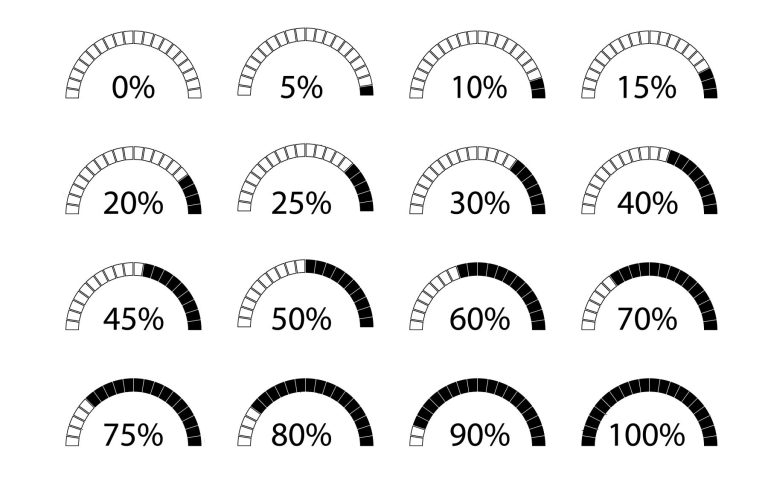Written by: Alexander Dvorzsák, PSM II., PSPO, PMI-DASSM
The Objectives and Key Results (OKR) system: the essence of "Objectives and Key Results"
Objectives and Key Results, or OKR for short, is a target setting and performance measurement system used by many leading companies around the world. OKR is a simple, transparent and flexible method to help companies focus on their key objectives and track progress. In this article, we present the definition of OKR, its essence, some example companies that have successfully implemented it, the challenges of using OKR and its relationship to company culture.
Definition and Essence of OKR
The method comes from Google, a re:Work with Google have made available on their website the a guide to its use.
Objectives and Key Results is a goal hierarchy system that defines and measures performance through Objectives and their associated Key Results. Objectives are inspirational goals that set the direction for the company or team and define the long-term expected state. Key Results are specific and measurable outcomes that contribute to the achievement of the Objective.
Scoring
Key Results are usually scored on a scale, for example from 0 to 1 or from 0 to 100. The purpose of scoring is to provide measurable and objective feedback on the performance of the Objective and its associated Key Results. Ideal Key Results usually include outcomes that are ambitious but realistic and achievable.
It is important to understand that Key Results may not always reach 100%, in fact, if 100% is achieved on a KR, it is not considered a well-chosen value because it was not ambitious enough if it could be achieved. On the scale, a value of 50% or higher is generally considered acceptable, while lower values indicate that Key Results were not met at the expected level.

What is a good Key Result?
The definition of good Key Results depends on several factors and may be relative to the context of the company and the objective. However, some general guidelines can help you to develop good Key Results:
- Scalability: The Key Result must be measurable and quantifiable. This allows objective evaluation and monitoring of performance.
- Relevance: The Key Result must be related to the given Objective and contribute to its achievement. Key Results must have a real impact on the company or team's objectives.
- Challenging: Key Result must be ambitious enough to challenge and inspire development and growth. But it must also remain realistic and achievable.
- Időkeret: The Key Result must specify a time frame or deadline within which it must be achieved. This helps to maintain focus and achieve goals on time.
- Balanced: It is important that Key Results are balanced and cover different areas or dimensions. In this way the company or team can achieve progress and effectiveness.
In the system, good Key Results are those that represent real and measurable progress towards achieving the Objective. The scores or percentages help to objectively assess the achievement of Key Results and allow the company or team to evaluate progress and performance.

What should I do if the Key Result is not good?
It is important to note that the OKR system is flexible and Key Results may change over time. Based on ongoing evaluation and feedback, the original Key Result may be modified or new Key Results may be defined to reflect expected outcomes and priorities.
The real value in the system is the focused and strategic delivery of objectives and that Key Results help to measure and monitor this process.
In terms of the recommended number of Key Results, there are usually 2-5 Key Results per Objective. It is not recommended to define too many Key Results, because it fragments attention and distracts focus. Choosing and defining the optimal Key Result gives a better chance of success and provides a more efficient measurement opportunity.
Example:
Objective (Goal) | Key Results (Key Results) | Score (0-1) |
Increase the number of monthly active users by 20% | Increase the number of registered users by 10% | 0.8 |
Increase monthly revenue by 15% | Increase the number of new customers by 20% | 0.6 |
Reduce the number of customer service complaints by 30% | Reduce the average recall time by 25% | 0.9 |
As the previous example shows, Objectives define specific objectives, while Key Results define measurable outcomes that contribute to the achievement of the Objective. Scores on Objectives reflect the achievement of Key Results and allow progress to be monitored.
For what timeframe should I enter OKRs?
The Objectives and Key Results system is used in different time horizons. Usually, cycles are repeated annually or quarterly, but other time intervals may often be used, depending on the dynamic and rapidly changing environment in which the company operates.
Objectives are usually longer term and are usually set for a year or a quarter. Objectives serve as a starting point to give direction to the company or team and define the expected results in the longer term.
Key Results are shorter term and measure and monitor the achievement of the Objectives. They are usually set for a quarter or shorter period. Key Results include specific and measurable outcomes that provide feedback on whether or not progress is being made towards the Objectives.
In OKR cycles, the setting of objectives and deliverables, as well as continuous monitoring and evaluation, allows companies and teams to respond to changing circumstances and prioritise tasks in an agile and timely manner. Regular reassessment and updating of OKR cycles enables focus to be maintained and corporate objectives to be achieved.
To summarise, the OKR system is used in a time horizon, where Objectives set longer-term goals and Key Results define short-term outcomes to measure and monitor progress towards Objectives.

Examples of companies that have successfully applied the OKR
It is widely used by companies such as Google, LinkedIn, Twitter, Spotify and many other tech companies. OKR makes companies' activities more focused, targeted and measurable, which contributes to better performance and business growth.
The difficulties of using OKR
Although the system has many advantages, it can be difficult to use effectively. One of the most common challenges is the correct definition of Objectives and Key Results. Objectives should be inspiring, ambitious and achievable, while Key Results should be measurable, relevant and time-bound. The design and communication of an OKR system requires serious attention to ensure that everyone understands and commits to the objectives.
No matter how well prepared you are, the system will not work perfectly at first. Good use takes time and energy, as with any new system or method, so set reasonable expectations and don't expect to be able to use it perfectly in the first quarter.
The relationship between OKR and company culture
One of the key elements for the success of the OKR system is the company culture. To implement it effectively, it is important that the company develops a culture that supports open communication, goal orientation and performance monitoring. It fosters teamwork, collaboration and individual responsibility, and it is important that management and leaders support and lead by example in the application of the OKR system.
Summary
Objectives and Key Results is a widespread and effective objective setting method that has been successfully used by many companies and organisations. The method consists of defining the objectives to be achieved and then supporting the achievement of these objectives with measurable, concrete key results. It enables focused, goal-oriented work, transparent monitoring of performance and adaptation to changing circumstances. It contributes to team effectiveness and business success by fostering a results-oriented culture.
Want to deepen your knowledge of agile thinking? Improve your practical tools and get international certifications! Check out our current agile training courses!

 Designabc
Designabc